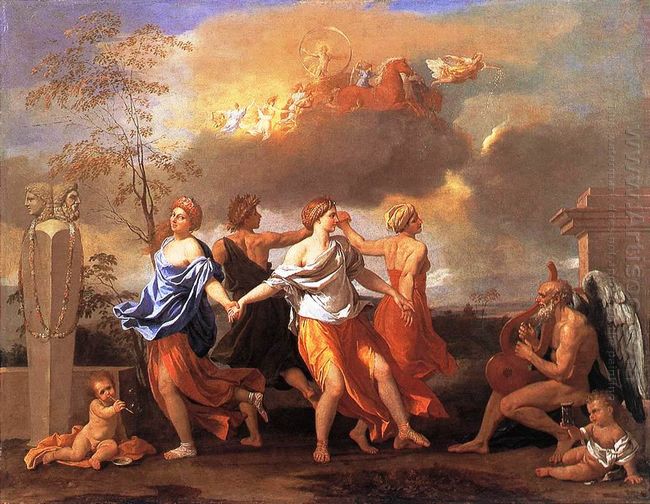Dance to the Music of Time was made when Nicholas Poussin was commissioned by Pope IX Clement. He was the philosopher and playwright, who was also the typical admirer and collector of Poussin’s works. This Nicolas Poussin painting was made in 1638, measuring 82.5X104cm, which is collected in the London Wallace Museum.
This genre painting brought a sense of information or confusion, which was a general discussion about the time, fate and human survival. What it appealed to the viewers was the ration rather than emotion. The composition of symbolic implication of Poussin in performance and geometry coordination made the conception in the specific form. The round dance represented the reciprocating life cycle and each dancer had its implicated effect. The dancers in the painting were the four allegorical figures: wealth, happiness, diligence and poverty. In this classicism painting, various elements that showed the changing time were around the dancers. Everyone’s expression in the painting looked concentrated and enjoyed dancing, which was admired by people with its shown beauty and harmony. The work invited us to discuss the meaning that the four figures represented as well as the significance between them and other symbols of the background.
In the distant dawn, the sun god Apollo was going ahead with the carriage under the guidance of goddess of dawn. The middle of the painting was a four-member waltz. They represented the wheel of fortune which was composed of four stages. People would spend the rest of their life through this cycle, again and again. The painting was full of eternal and short contradictory images. The old “Father Time” played the harp for the dancers. Besides him, the naked children held an hourglass; the time flied with the stream of time. This was a masterpiece with the precise composition and accurate skills. All of Poussin’s works implied a complex but perfectly reasonable and carefully designed geometry. One of the funs was to appreciate the potential geometric structure in his work. In this painting, the dancers’ circular motion was placed in a triangle.
